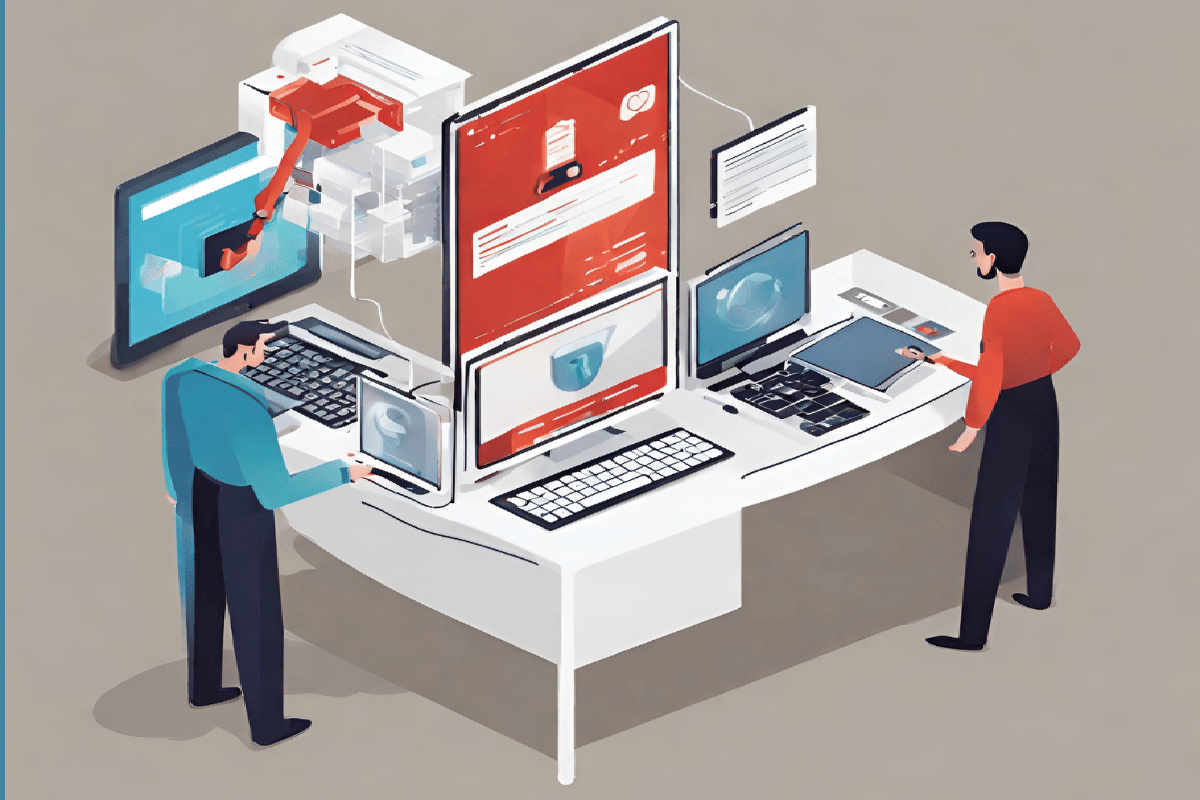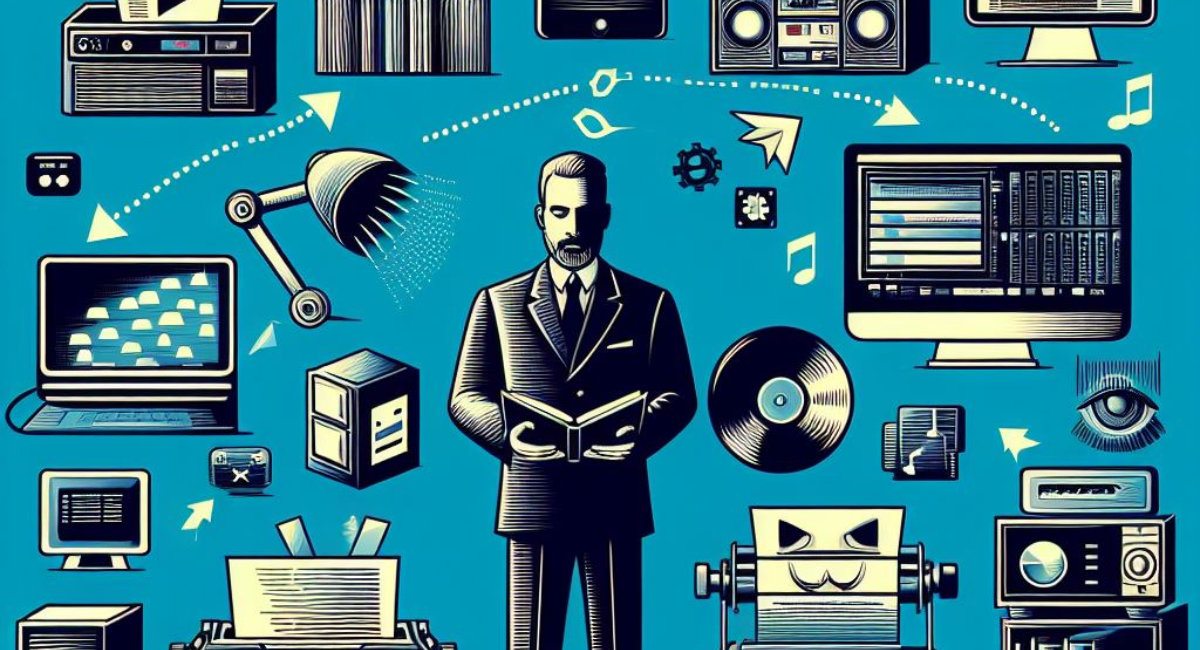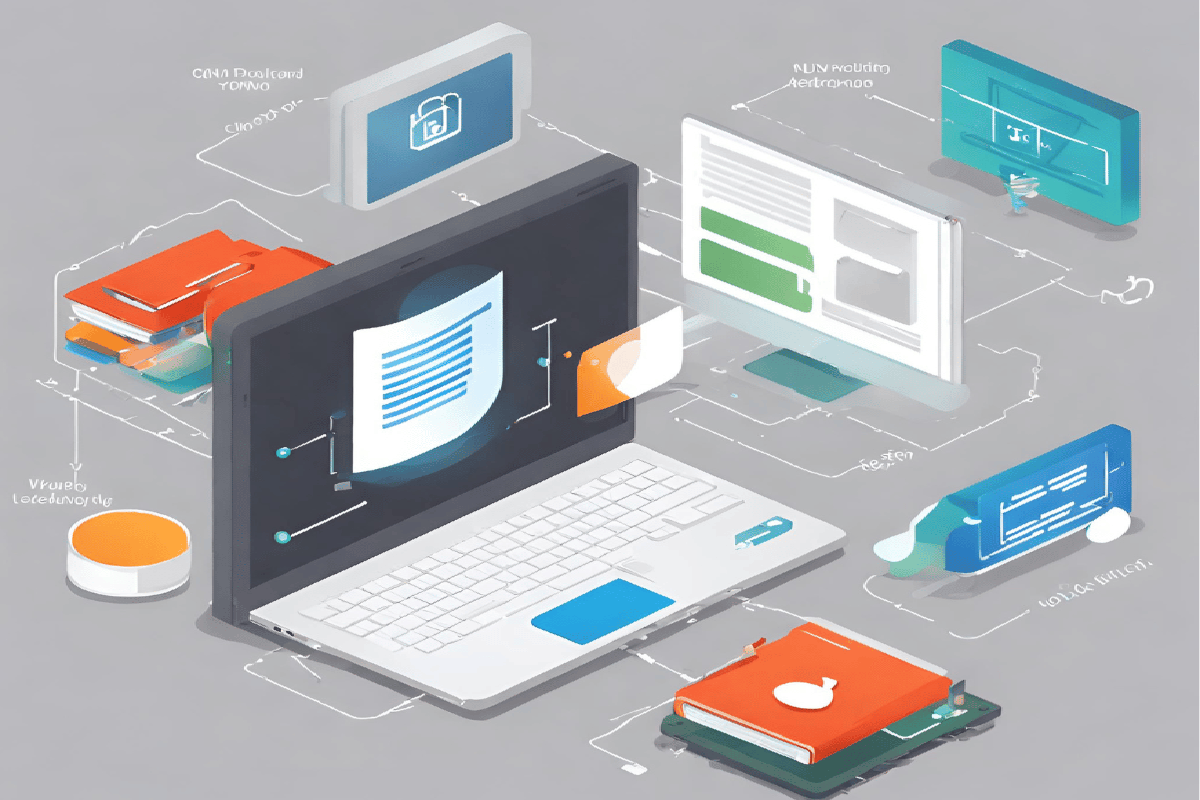Digital copy protection, also known as digital rights management (DRM), encompasses technologies and strategies aimed at controlling access, distribution, and usage of digital content such as music, videos, software, and ebooks. It seeks to strike a balance between allowing legitimate users access while preventing unauthorized copying and sharing. Threats to digital copy protection include piracy, reverse engineering of DRM, social engineering attacks, and insider threats. Strategies to combat these threats include DRM technology, watermarking, fingerprinting, legal actions, and takedown notices. Copy Protect by newsoftwares.net is software designed to protect files, folders, and drives from unauthorized duplication and use.
Understanding Digital Copy Protection:

Digital copy protection, often referred to as digital rights management (DRM), is a set of technologies and techniques used to control the access, distribution, and usage of digital content such as music, videos, software, and ebooks. It aims to strike a balance between allowing legitimate users to access content while preventing unauthorized copying and sharing.
Copyright Violation Threats:

Early Copyright Violations
In the past, copyright violations were primarily limited to physical media, such as books and music records. The illicit reproduction of copyrighted material involved labor-intensive processes like photocopying and bootlegging, which were easier to track and control compared to digital methods.
The Advent of Digital Media
The emergence of digital media marked a significant turning point. The transition from physical to digital formats opened the floodgates to new and more sophisticated forms of copyright violation. Digital piracy became widespread, with individuals sharing copyrighted material online through file-sharing platforms, torrent sites, and peer-to-peer networks.
Streaming Services and the New Threats
The rise of streaming services brought forth new challenges. While these platforms offer legitimate access to copyrighted content, they also face threats in the form of account sharing, password trading, and screen recording. Copyright owners must navigate the intricacies of licensing and distribution agreements to maintain control over their content.
Threats to Digital Copy Protection:
Piracy
Piracy remains a significant threat to digital copy protection. Pirates often find ways to circumvent DRM measures, making illegal copies of content readily available on torrent sites and other platforms. This not only results in revenue loss for content creators but also undermines the integrity of copyright laws.
Reverse Engineering
Hackers and skilled individuals are constantly working to reverse engineer DRM systems. Once they crack the code, they can easily remove protection mechanisms, enabling unauthorized access to digital content. This poses a constant challenge to the developers of DRM technology.
Social Engineering
Social engineering attacks involve manipulating individuals into revealing confidential information. In the context of digital copy protection, this could mean tricking a user into sharing their login credentials or decryption keys, providing unauthorized access to the content.
Sometimes, the threat to digital copy protection comes from within an organization. Employees with access to sensitive content may leak it intentionally or unintentionally. This highlights the importance of implementing strict access controls and monitoring systems.
Modern Digital Copy Protection Strategies:

Digital Rights Management (DRM)
One of the primary methods to combat digital copyright violations is Digital Rights Management (DRM). DRM technology encrypts and protects digital content, limiting access to authorized users. While effective to some extent, it has faced backlash from consumers due to limitations on usage and compatibility issues.
Watermarking and Fingerprinting
Content creators have turned to watermarking and fingerprinting as subtler ways to protect their work. Watermarks are embedded in images, videos, or documents, making it harder for infringers to use the content without detection. Fingerprinting involves adding unique identifiers to media files, enabling tracking across the internet.
Legal Actions and Takedown Notices
In response to copyright violations, rights holders often resort to legal actions and takedown notices. These involve issuing cease and desist orders or filing lawsuits against infringing parties or websites. While these measures can be effective, they can also be time-consuming and expensive.
Copy Protect Software:
Copy Protect is a software developed by newsoftwares.net that is designed to provide protection for files, folders, and drives against unauthorized duplication and use. It offers several key features and functionalities to achieve this goal, making it a versatile solution for users who want to safeguard their digital content.
Key Features and Functionalities:
- User-Friendly Interface and Installation:
- Copy Protect offers an easy and straightforward installation process, making it accessible to a wide range of users, including those who may not be tech-savvy.
- The user interface is designed to be intuitive and user-friendly, ensuring that users can navigate the software with ease.
- Unique Features: CD/DVD Burning and File Conversion:
- Copy Protect includes the ability to burn CDs and DVDs, which allows users to create physical copies of their protected files for distribution or backup purposes.
- It also offers file conversion capabilities, allowing users to change the bit rates of audio and video files to suit their specific needs.
- Compatibility and Support:
- The software is designed to support multiple file types, ensuring that users can protect a wide range of digital content, including videos, audio files, documents, and images.
- Copy Protect is compatible with different devices, allowing it to function effectively across various platforms and operating systems.
Advantages of Using Copy Protect:
- Read-Only Executable:
- One of the standout features of Copy Protect is its ability to create read-only executables. This means that the protected files can only be accessed and run on devices that have been authenticated or authorized by the user.
- Unauthorized users cannot make copies of the protected content, providing an extra layer of security.
- Multiple File Type Support:
- Copy Protect supports a wide range of file types, including videos, audio, documents, and images. This versatility allows users to protect and secure various types of digital content.
- Users can customize the protection settings for each file type, ensuring that their content remains secure and accessible only to authorized individuals.
- Universality:
- Copy Protect can create executables that are compatible with different types of storage media, including CDs, USB drives, and DVDs. This universality ensures that users can distribute their protected content on a variety of physical media.
- Users can choose the appropriate medium based on their needs, whether it’s for personal use or distribution to a wider audience.
Conclusion:
Digital copy protection, also known as digital rights management (DRM), plays a crucial role in safeguarding digital content in an era where piracy and unauthorized distribution pose significant threats to creators and copyright holders. The evolution of copyright violation from physical media to digital platforms has necessitated the development of sophisticated protection strategies, including DRM, watermarking, and legal actions. Copy Protect, developed by newsoftwares.net, offers a user-friendly solution with features such as read-only executables and support for various file types, contributing to the broader efforts to protect digital assets.
Frequently Asked Questions:
Why is DRM important?
DRM is essential for content creators and copyright holders to protect their intellectual property by preventing unauthorized copying and distribution of their digital content.
What are the challenges faced by DRM in the digital age?
Challenges include piracy, reverse engineering, social engineering attacks, insider threats, and balancing protection with user convenience.
What are watermarking and fingerprinting in digital copy protection?
Watermarking involves embedding identifiers in media files to deter unauthorized usage, while fingerprinting adds unique identifiers for tracking content across the internet.
What legal actions can rights holders take to protect their content?
Rights holders can issue cease and desist orders, file lawsuits, and send takedown notices to combat copyright violations, although these measures can be time-consuming and expensive.
Who can benefit from using Copy Protect software?
Copy Protect is suitable for individuals and organizations looking to safeguard their digital content from unauthorized access and duplication, making it valuable for content creators, businesses, and individuals concerned about data security.
Is Copy Protect software compatible with different operating systems?
Yes, Copy Protect software is designed to be compatible with various platforms and operating systems, ensuring its effectiveness across different devices and environments.
